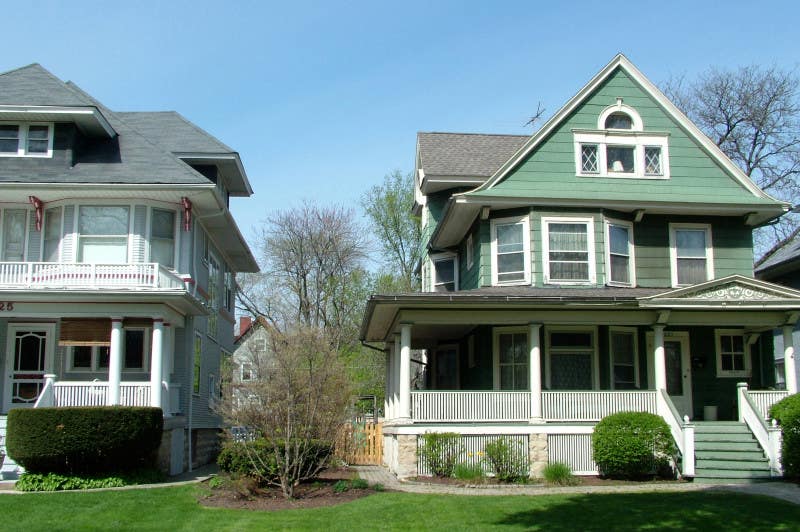
Vincent Michael
You Are Not Your Neighbor’s House
One of the most common and frustrating mistakes made by owners in historic districts is to assume that design elements from other houses can be used on yours. I saw it happen again last month in San Antonio, and I have countless examples from Chicago and Oak Park where a homeowner or developer decided that “historic district” meant your neighborhood was some kind of all-you-can-eat buffet of windows, doors, dormers and decorations.
It’s not. Every building is unique and has its own documentary and forensic past which is the ONLY guide to appropriate rehabilitation. The great virtue of landmark regulations is that they treat every property individually, on its own merits and in the context of its own unique design history. Yet they are REGULATIONS, so lawyers come along with their idea of “precedent” which makes some sense for the crude metrics of zoning but none for the precise metrics of preservation. There is no precedent in preservation.
I witnessed the all-you-can-eat buffet in the Gunderson Historic District in Oak Park, Illinois. In the 1910s a developer built several blocks of houses with similar plans using a variety of dormers, porches, bays and decorative schemes that alternated between Classical, Prairie/Craftsman and Renaissance stylings. In this case, the homeowner’s confusion was a bit more understandable because the designation discussed the “kit of parts” approach to the area’s original construction.
One owner had a deteriorating front porch with two simple Renaissance columns and wanted to substitute Prairie columns. The preservation commission denied the permit, but was overruled by the village board. The resulting construction did not in fact match any of the “Prairie” style porches in the district, and further struck an awkward note in terms of scale and proportion in relation to the rest of the house. This case illustrates a further pitfall of the buffet approach to design. It is very difficult to match the scale and proportion of historic building elements using readily available contemporary construction techniques and materials.
As a professor, the concept “there is no precedent in preservation” was hard to get across to my graduate students. I guess we all naturally think like lawyers. I would give them a test question where a homeowner came into the landmarks review board wanting to put a bow window in their house and bringing photographs of six other houses in the district with bow windows.
The correct answer of course is that only evidence of a bow window in THAT particular house provides evidence of its appropriateness. But most students got that question wrong, thinking that precedent was the key to all regulation.
There is another problem with the “but all the other kids are doing it” argument. Often the owner or developer’s examples of elements on other houses are actually ones that occurred PRIOR to the historic district creation. In other words, they would never have been allowed once people got together to landmark their neighborhood. It is always useful if landmarks staff have pre-designation photos to prove these cases.
And that is the bottom line – photos, documentary evidence or forensic evidence found on site. The best guide to YOUR house is your house, not your neighbor’s.
Vincent L. Michael, PhD is an international thought leader, writer, expert consultant and speaker in heritage preservation. Now completing his 9th year as a Trustee of the National Trust for Historic Preservation, Vince served from 2012 to 2015 as Executive Director of the Global Heritage Fund in Palo Alto, California, and prior to that as John H. Bryan Chair of Historic Preservation at The School of the Art Institute of Chicago.
To find out more, you can visit his web site: www.vincemichael.com









